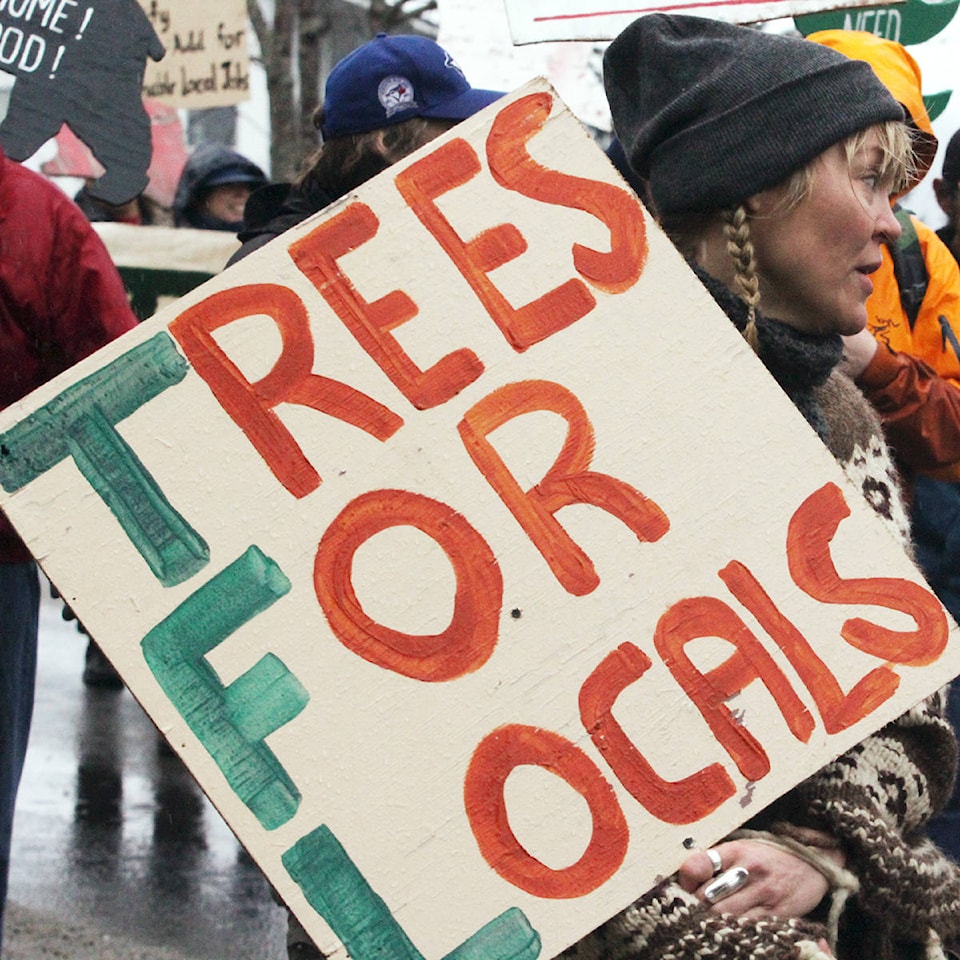Haida Gwaii’s long-awaited community forest just grew a big step closer.
On Saturday, 20 days after an all-islands push for it, B.C.’s forestry ministry issued a new map for a potential community forest and a formal invitation to apply for one.
“In 21 years of pursuing this on Haida Gwaii, this is the first tangible invitation to apply,” said Janine North, executive director of the Misty Isles Economic Development Society (MIEDS), speaking to Queen Charlotte council on Monday night.
“We’ll see where it goes from here.”
On paper, the proposed community forest includes five areas that should support a total cut of 80,000 m3 a year.
But the only allowable cut listed in the ministry’s offer to apply is less than that: 55,000 m3.
That is the annual harvest the Haida Gwaii Community Forest would be required to cut in partnership with BC Timber Sales — a provincial agency that puts timber sales up for open bid so it can collect pricing data and set the provincial tax on timber.
Although it isn’t written anywhere in the province’s offer to apply, North said it’s reasonable to assume the community forest would be free to harvest another 25,000 m3 a year on its own.
North cautioned that all the harvest estimates are estimates only, and could change depending on the type of forestry practice chosen for the community forest — selective or retention logging would mean a lower harvest, for example. Also, the total annual allowable cut for Haida Gwaii is currently under review, and will likely fall when the Haida Gwaii Management Council agrees on a new one early next year.
Critically, the province’s invite to apply for a community forest includes the option for a temporary tenure that would allow BCTS to keep working in the proposed community forest area until it’s actually up and running — something the province estimates could take at least a year.
That issue is part of what sparked an 11-month dispute between BCTS and the Council of the Haida Nation, which has effectively frozen timber sales in the future community forest area.
Two Port Clements logging companies that rely on BCTS have warned they are quickly running out of wood, and need those or other sales to go ahead to avoid layoffs.
Setting up the temporary tenure will require the CHN, BCTS and MIEDS to reach an agreement, something that could prove challenging given a recent Haida House of Assembly motion to expel BCTS from the islands.
If it does finally go ahead, the Haida Gwaii community forest licence will be held by MIEDS on behalf of its five member communities: Masset, Port Clements, Queen Charlotte, the Sandspit area, and rural Graham Island.
But first, islanders have to come up with a management plan to guide the community forest’s work.
Whether BCTS is involved or not, any work done in the community forest will have to follow that plan.
“That management plan would guide the work done by BC Timber Sales,” North said.
Islanders now have 120 days to come up with a draft plan, and have it signed by a professional forester.
North said MIEDS will launch a website and hold public input meetings about the plan starting early in the new year.
“There will be lots of public opportunities,” said Queen Charlotte Mayor Greg Martin.
